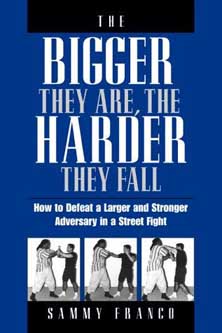LETTERS FROM THE GLOBAL PROVINCE
Getting More or Less Than You Bargained For, Global Province Letter, 23 November 2011
Where Do You Put Your Bucks? Stormy weather out there. There's no sun up in the sky. Our financial markets have had hurricanes, tornadoes, blizzards, and forebodings since 2008 when our rotten financial structure fell apart. Most of us are fairly clear that this will go on for another 10 years, with volatility ruling the today, and today's apparent safe investments falling apart tomorrow. In our judgment there is not a secure large bank in the nation, even with the Government's bailouts and the half-baked implementation of Paul Volcker's reforms. None of them are sufficiently capitalized given the fact that they now make too much of their profits from trading activities, too little from old-fashioned banking. So you cannot stash your money in the bank—with confidence. What do you do when nothing looks to be rock solid?
By and large, in these United States, we invest in 2 ways—value investing and growth speculation. When the good times are with us, growth investing makes some sense. Growth investing is a bet on tomorrow. One spots a good company and says sales and profits are only going to get better. But when the economy is locked in low gear (and the whole world is a bit stuck now) then it is hard to get growth. Probably 90% of the major companies here and abroad are headed for a hard landing. And, for sure, the vastly over-priced internet companies are full of hot air. Their balloons will explode, just as they did just a few years back in a bevy of similar concept internet stocks, which were thought at the time to defy gravity itself.
Value Investing.  In bad times, perhaps even in average times, value investing has an allure. There you are not betting on growth in earnings, but are simply trying to value the assets a company already has. You pray that you are buying those assets cheap, making a buy when a company is out of favor. In our Investment Digest section, we provide a link to ValuePro which gives investors a quick tool to see if the stock price of a company is less than its enterprise value. This is a beginning, but only a beginning, in finding out whether you are paying 10 cents or 10 dollars for a dollar's worth of assets.
In bad times, perhaps even in average times, value investing has an allure. There you are not betting on growth in earnings, but are simply trying to value the assets a company already has. You pray that you are buying those assets cheap, making a buy when a company is out of favor. In our Investment Digest section, we provide a link to ValuePro which gives investors a quick tool to see if the stock price of a company is less than its enterprise value. This is a beginning, but only a beginning, in finding out whether you are paying 10 cents or 10 dollars for a dollar's worth of assets.
George Putnam's Turnaround Letter. George Putnam is a canny Boston investor who produces investment publications as well as managing money. Both his publications and his investments have had enviable track records. He's known most for The Turnaround Letter, which picks up companies that have hit a bad patch but are likely to get back on a better footing. His funds, on the other hand, specialize in distressed debt, which is a euphemism for bonds of bankrupt companies. In general, the prices of turnarounds and of bankrupts dive into the lower depths as the bad news seeps out, so there's a good chance that they may go up eventually, instead of further down.
Putnam has been at it for 25 successful years, a fact which came to our attention in his August 2011 Turnaround Letter. There he told his readers a few of the things he's learned in 25 years. On the face of things, he is talking about turnarounds. But what he really does is make us think through what creates value. That is we learn that you have to go way behind the numbers to determine whether you are getting something for your money when you buy into a company down on its luck and out of favor. With Mr. Putnam's permission, we have quoted what he says he's learned about this kind of value investing:
TURNAROUND INVESTING:
LESSONS LEARNED OVER 25 YEARS
Since we just passed the 25th anniversary of the launching of The Turnaround Letter, we thought this might be a good time to look back at some of the important lessons we've learned over the last quarter century. None of these lessons represent the key to instant riches, but if kept in mind they should help you reduce mistakes and generate good profits over time when you invest in turnaround situations.
Turnarounds are still inefficient. One of the most important things we've learned is that the basic premise that drove us to start the newsletter is still true: turnarounds represent an inefficient niche in the market where you can earn abnormally high returns. There are a number of reasons for this: turnarounds can be hard to understand; investors are often biased against a turnaround name because of its troubled past; and you usually can't get much insight into future performance by looking at historical results. All of these factors are just as true today as they were 25 years ago, and they tend to scare many mainstream investors away from turnaround situations.
A low price doesn't necessarily make a stock cheap. There may be good reasons why a stock trades at a low price. Moreover, every stock that becomes worthless trades at a low price for a while on its way to zero. You have to find a reason why a stock's price will increase, i.e., a catalyst of some sort.
Look for a solid core business. For a turnaround to succeed, the company must have a solid core business on which to rebuild. A good brand can be a helpful part of that core business, but it is not enough by itself. There are numerous famous brands that have disappeared over the years. Just ask anyone who owns Blockbuster or Borders stock today.
If there is a problem with the core business, determine whether it is cyclical or secular. Some companies often run into trouble when the economy softens, but their core business remains viable, and they will rebound when conditions improve. The airlines fall into this category. In other cases, there may be long-lasting changes in the way an industry does business that a particular company has missed. Here again, Blockbuster and Borders are good examples of companies that were left behind by secular changes.
Always check the debt. Often it is a company's heavy debt burden that gets it into trouble, and even if that is not the case, too much debt could still impede the turnaround. For a successful turnaround, the company must either be able to service its debt or reduce it. If a company cannot service its debt and looks as though it will be forced to restructure, perhaps in Chapter 11, you probably don't want to buy the stock. But you may want to consider buying the debt. Often, when a company restructures, the holders of the debt end up owning most of the equity in the reformed business.
Stocks of companies in bankruptcy are almost always worthless (or close to it). When we considered launching this newsletter, we thought we'd be focusing a lot on the stocks of companies in Chapter 11. Then we did some research and discovered that stocks of bankrupt companies almost never do well. To come out of Chapter 11, a company must satisfy all of its other creditors before it can give stockholders anything. And it is a very rare bankruptcy where there is any real value left for stockholders after all the other creditors have been paid off. Most of the value in the business (often represented by new stock) will go to holders of the company's debt and other obligations.
However, the stocks of companies that have emerged from bankruptcy are often undervalued. When a company uses the bankruptcy process properly, it can emerge as a much stronger business, often with a very healthy balance sheet. But most investors don't realize this, and they think of the old, troubled company when they look at the stock. Therefore, these post-bankruptcy stocks are often over-looked and undervalued.
But not every post-bankruptcy stock does well. Over the years we've learned about Chapter 22 and Chapter 33. (Unlike Chapter 11, you won't find these chapters in the Bankruptcy Code — they are colloquial designations for companies that file for bankruptcy two or three times). Sometimes, the company doesn't reduce its debt enough while in Chapter 11, or perhaps the business just wasn't viable for some other reason. The roster of Chapter 22's and 33's even includes some prominent names such as Polaroid, TWA, Grand Union Supermarkets and Levitz Furniture.
You should not try to time the market. While there may be cycles in the stock market — and there definitely are credit/bankruptcy cycles — we don't know anyone who can successfully time those cycles. Some people may get out of the market at a good time, but then they don't get back in and miss a big upswing — or vice versa. We continue to advise always staying as fully invested as you can and still sleep at night.
Diversification is still essential. We were pretty sure about this when we started the newsletter 25 years ago, and we are even more certain of it today. No matter how much research you do on a turnaround situation, sometimes it will not work out the way you expect. Turnarounds have a lot of moving parts, and it is hard to get all the parts right. The best way to mitigate the risk of making a bad call is to diversify your holdings. That reduces the damage that a bad pick (or unforeseen event) can do to your portfolio.
Patience is also still essential. Many times, if you do your homework, you will ultimately be right about a turnaround, but the rebound will take longer than you expect. Few things in investing are as frustrating as making a good call but selling the stock just before it takes off because you have gotten tired of waiting.
Humility is key, too. When it turns out that you were not just early but were actually wrong about an investment, it is important to acknowledge your error, try to learn from it and move on. One of the reasons that turnaround investing remains an inefficient, and therefore profitable, niche is that many investors dabble in a turnaround situation or two, lose money on it and say "this turnaround stuff is really risky and I'm going to try something more sensible like chasing hot growth stocks" (talk about a risky strategy!).
These last four lessons apply to all types of investing, not just turnaround investing. But if you always keep them in mind and remember at least a few of the other lessons we've discussed, you should find turnaround investing to be very profitable
Bad Markets. All this said, do understand that value stocks do badly when the market goes to hell in a handbasket. Growth companies do even worse. At such times, there really is no good place to hide. What you can do, however, is pick stocks and other types of investments that may waver in the breeze, but will, nonetheless, survive the bad weather.
P.S. We should make clear that entities and individuals associated with William Dunk Partners Inc. have funds under management at New Generation, Mr. Putnam's company.
P.P.S. During the terrible stock meltdown at the end of 2008, lots of smart money managers had substantial cash, knowing that bad things were coming. But where did they have their cash. We advise a number of them and get to ask them disturbing questions. It is amazing how many had their liquid assets at Goldman Sachs, something we learned about during the worst parts of the crisis. We said, "What makes you so sure Goldman is secure?" It wasn't incidentally and was bailed out by a variety of parties. Warren Buffett put a slug of his horde of cash into Goldman for a while. Financial companies of all sorts are bad at managing their spare cash, and we have seen many of them over the decades take a hit because they are not watching their treasure closely…
Home - About This Site - Contact Us
Copyright 2011 GlobalProvince.com